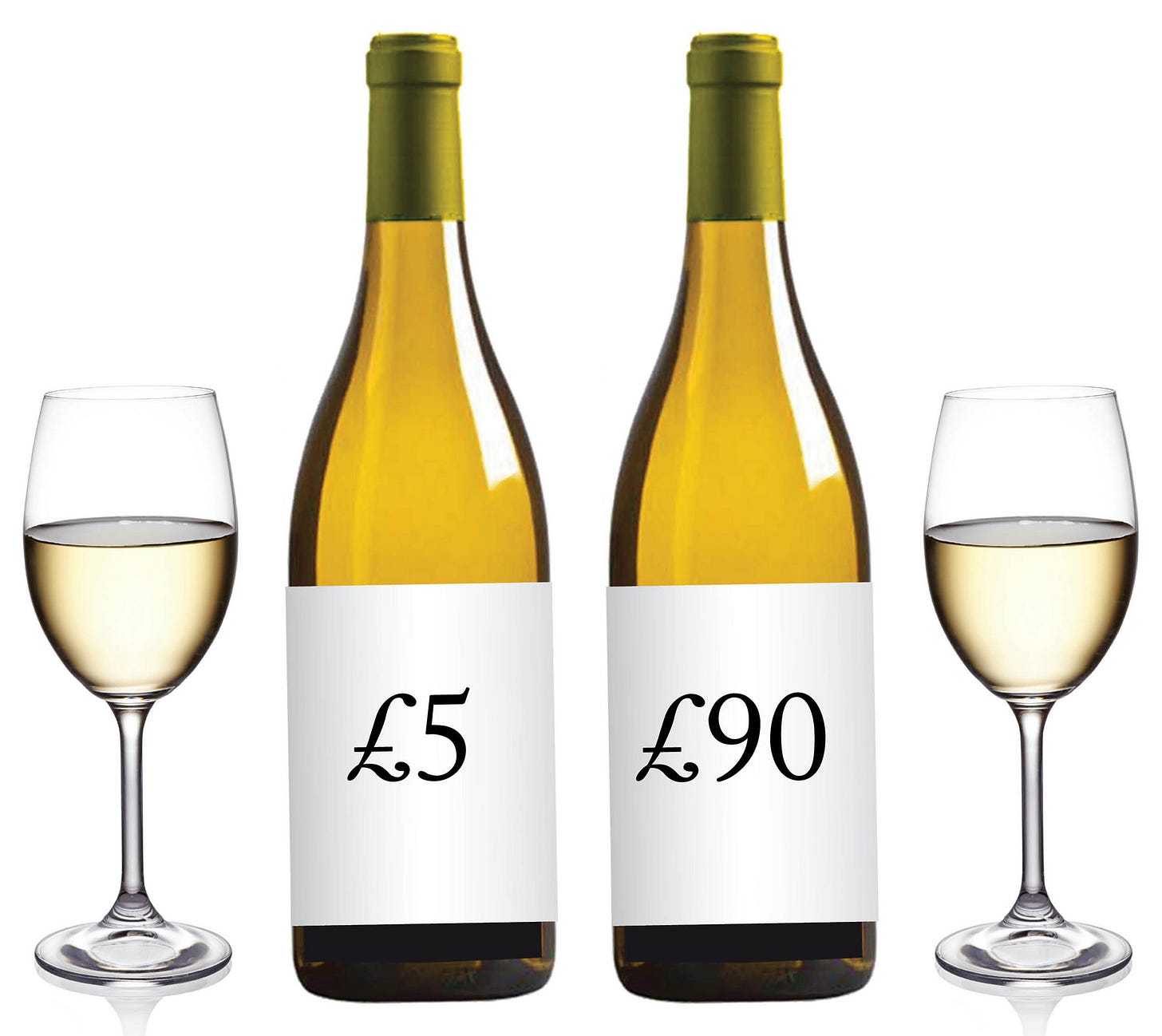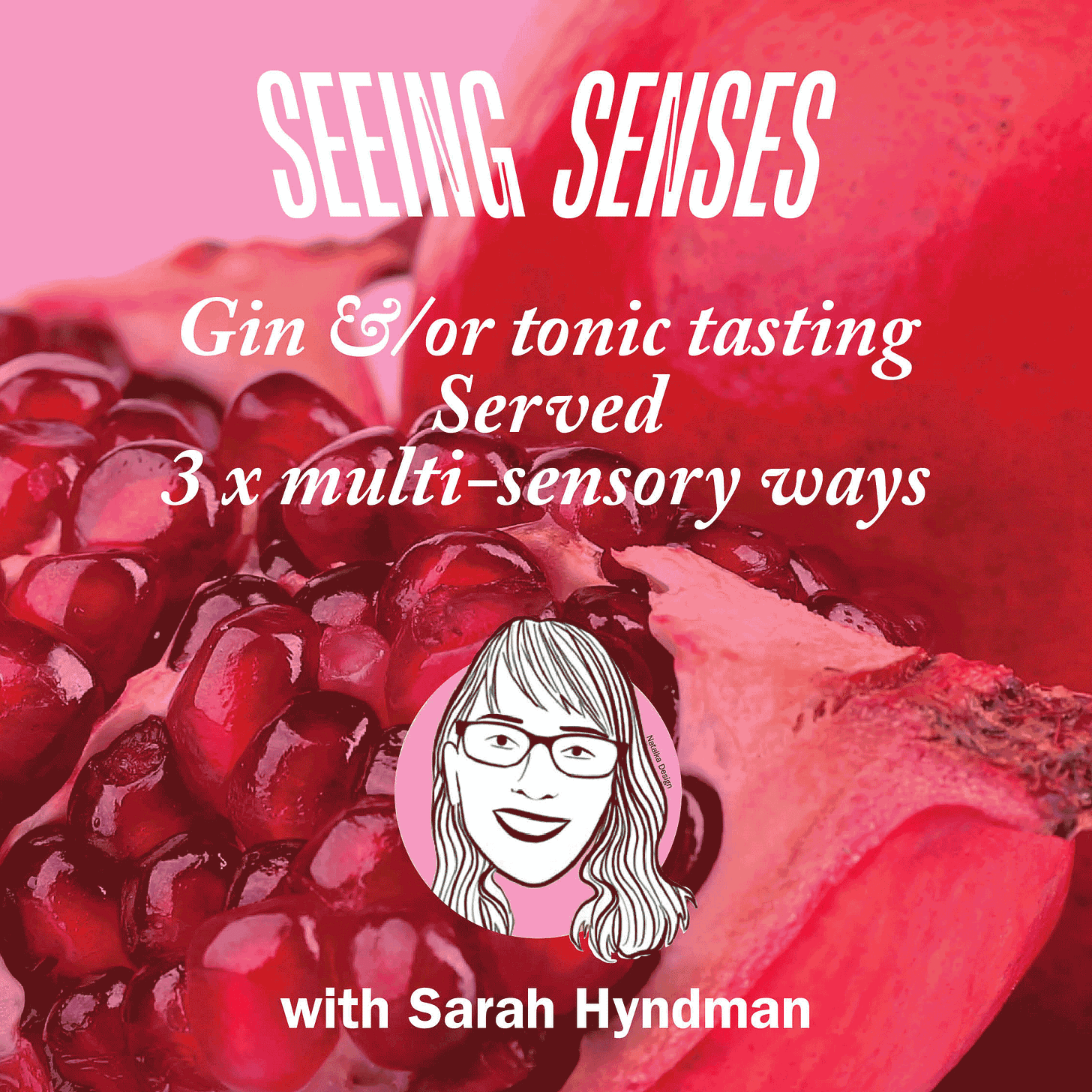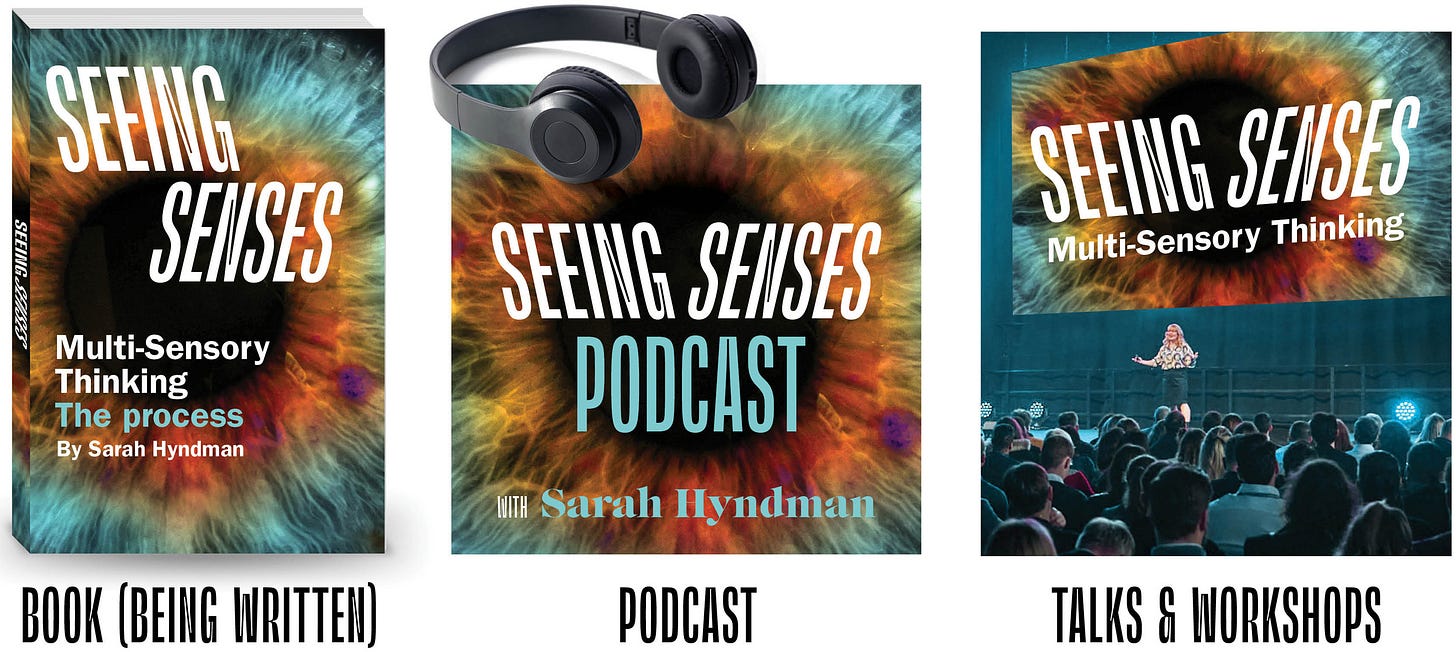Making predictions: from eating with your eyes to hearing fonts
Welcome to the world of Multi-Sensory Thinking
Explore the experiential science of how what you see, hear, and touch shapes what you taste and feel. Discover how your brain is busy predicting pleasure before it even happens, whether it’s a £1.99 lasagne or sonic typography. Plus, if you’re a paid subscriber get in on a sneak peak game of Can you guess the font from the music?
Do you eat with your eyes?
Imagine a hot, just-cooked lasagne. You’re about to put your fork into it. You smell the tomato sauce, rich with herbs. The tang of cheese melting into the creamy sauce. Steam rises as your fork breaks the surface. In your mouth the contrast of melted cheese against the crispy bits of pasta mixes comfort with crunch.
But, will it always taste the same? Could the environment it’s served in influence its deliciousness?
Yes, it turns out it can. In the most recent Seeing Senses podcast episode Chef Jozef Youssef describes how serving a £1.99 lasagne out of the microwave packaging vs in a restaurant with good lighting, cutlery and wine glasses on the table, changed the perceived value by more than 600%. Here’s this story on LinkedIn and Instagram.
“That’s crazy that you would have such a disparity when it’s exactly the same food from exactly the same supplier made exactly the same way. We did nothing to it other than just plated it on a nice plate. We eat first with our eyes, what we see sets so many expectations. It all is a sum of parts that comes together.” Chef Jozef Youssef
Same wine, different taste
That was an example of something that happens to us every day without us even realising it: the predictions we make have an impact on what we enjoy.
A brain imaging study published in 2017 showed how the same glass of wine is much more enjoyable if we think the bottle it’s poured from costs more, for example £90 instead of £5. Out of the two glasses below, which would you reach for instinctively? This goes beyond social signalling to personal experience.
Multi-sensory tasting experiments
I served up a selection of experiments along this theme at the recent Gin &/or Tonic Tasting tester development session in my studio.
Course 1. Flavour is in the brain of the beholder: How colour influences what we taste.
Course 2. Mouthfeel is a sonic & typographic experience: How what we hear and see can amp up the fizziness.
Course 3. Pleasure is a prediction: Does a label influence enjoyment?
This is the idea behind a noisy gamefied experiment I’ve been playing with audiences for over a decade with a giant deck of “Buy Me” cards and lots of shouting. It riffs off The Price is Right. Here’s a simplified version for you to try out.
Which do you think are the cheapest and most expensive? Will your answers match what audiences regularly shout out? Hint, there’s been some stylistic shuffling at the expensive end in more recent years. I’d love to hear what you think in the comments.
Typeface as surrogate price tag
The brain searches for patterns to make sense of a chaotic world. It likes everything to fit. In order to do this it uses metaphors—think how yellow can be a colour, an emotion and a smell. This is the brain’s way of making very different things make sense. Now a font can become a surrogate for the idea of cheap or expensive. What’s more, these metaphorical predictions prime our experiences. For example, science shows that the more saturated the colour, the more seemingly intense the flavour, even if the only thing changing is the colour. This all happens so automatically that we’re seldom aware of it.
Multi-Sensory Thinking involves understanding the unconscious cues that we feel but don’t notice consciously. Here’s a LinkedIn post I wrote about brands being noseblind, also called olfactory adaptation. “If your brand walked into a room, would people feel it before they saw it?”
If you’re interested in the Multi-Sensory Thinking report being published later in the year, make sure you’ve subscribed to this newsletter for updates.
Other ways you can find out more and work with me:
Can you guess the font from the music?
This is a fun sneak peak for paid subscribers ahead of the next Seeing Senses podcast episode, coming out in a week(ish).
There’s a fascinating link between the most recent episode where Chef Jozef Youssef describes his synaesthesia-themed chef’s table and the next guest LJ Rich. She’s a world-renowned AI music artist, TV broadcaster and genuinely lovely person. LJ’s a synaesthete who sees music and hears fonts.
She surprises me during the interview with a game for us to play. She’s composed musical interpretations of a selection of fonts so we can hear what her synaesthetic brain experiences. During the interview she plays the pieces of music and asks me to either describe or guess the font. To both of our surprise I get two out of three pairings spot on, here are the two fonts I aced for you to guess.






